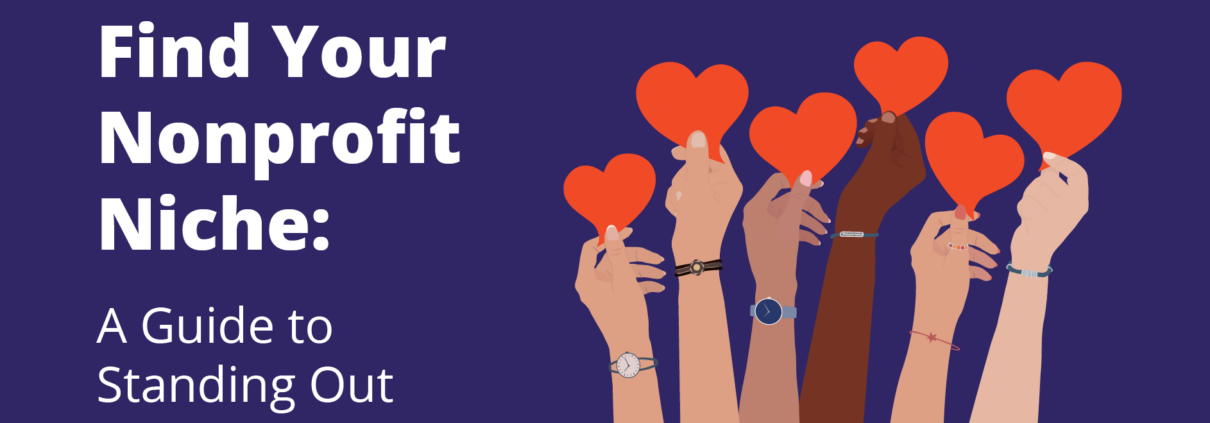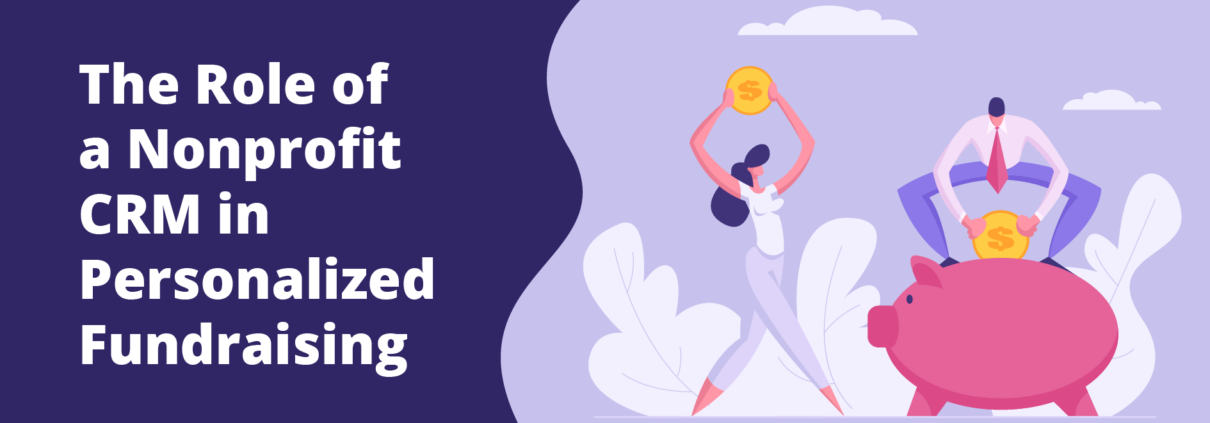Finding Your Nonprofit Niche: A Guide to Standing Out
Niche marketing strategies allow organizations to target very specific audiences. These audiences typically have unique needs and preferences. However, the benefit is that you’ll connect with individuals who are more likely to convert—for businesses, that might mean making a purchase. For nonprofits, that might mean donating or supporting in another way.
For nonprofits, niche marketing and fundraising means identifying and targeting individuals with a particularly strong affinity for your cause. Pinpointing these audiences will help you secure a loyal base of supporters ready to donate to your fundraisers, volunteer, and offer their help where it’s needed most. But to reach them, your nonprofit will need to understand and market its niche.
We’ll help you do that in this guide—here, you’ll learn how to define your unique place in the nonprofit sector and appeal to supporters.
1. Define your unique value proposition.
A unique value proposition (UVP) is a single, clear statement that explains the specific benefit or value donors will gain from supporting your nonprofit. In other words, why should they give to your nonprofit and not another?
To establish your nonprofit’s UVP, start by:
- Reviewing your mission statement and impact. Like the rest of your nonprofit’s messaging, your UVP must be grounded in your mission. Brainstorm some of the tangible ways your nonprofit makes your cause come to life. It can be helpful to study past impact reports during this step.
- Analyzing data. Get a precise understanding of who you help, how you do your work, and who your supporters are. If you follow GivingDNA’s recommendation to segment donors based on shared characteristics like giving behavior or demographics, study the top-performing segments to identify common characteristics. Then, shape your UVP around their affinities and preferences.
- Studying peer organizations. Examine peer organizations to determine what’s working well for them, what motivates donors to give to them, and which traits or benefits they highlight. How can your nonprofit address similar needs or take inspiration from your peers’ approaches while carving out your own niche?
- Define your unique offerings or benefits. There are two sides to consider: the unique programs you offer to beneficiaries and the unique benefits for donors. Ideally, your target audience will value both. For example, perhaps your homeless shelter is open around the clock and offers more extensive services and resources than similar organizations in your area. Additionally, you provide donors with engaging welcome packages, invitations to exclusive events, and behind-the-scenes tours.
Once you’ve drafted a few preliminary UVPs, test them on trusted board members, supporters, and other stakeholders. Gather feedback on how well the message resonates with them and whether it accurately represents your organization. Refine the message as needed before using it for broader campaigns.
2. Establish your brand identity.
Kwala’s guide to nonprofit branding defines the term as a form of visual storytelling that communicates your mission and values with a distinguishable flair. New supporters will form a first impression based on your branding, and existing supporters will use it to visually identify your nonprofit. Done right, your brand can quickly communicate its niche to your audience.
For example, environmental causes often use shades of green or tree icons to communicate what they do. A cat rescue, on the other hand, might use cat ears, a paw print, or a ball of yarn to achieve the same goal. When building or refreshing your branding from a more niche perspective, focus on these core components:
- Brand personality: This is how your nonprofit expresses its essence through tone, voice, beliefs, and more—think of ascribing human characteristics to your brand. If your nonprofit were a person, would it be serious, honest, wholesome, cheerful, etc.?
- Brand design and visual elements: This refers to the visual elements of your branding, like your logo, brand colors, and typography. These elements should align with your brand personality. A playful, unique typeface like Pacifico might be a decent option for lighthearted causes while serious or heavy causes should use a more refined one like Garamond.
When you’re satisfied with your branding, ensure it remains consistent across every aspect of your nonprofit’s website, messages, and campaigns. Not only does this make your nonprofit appear professional and credible, but it will help supporters remember and identify your organization.
3. Appeal to the niche in your marketing campaigns.
This may seem obvious, but it’s all too easy to keep marketing messages broad and palatable. Avoid the trap of being so general that your messaging becomes forgettable.
Try out these methods to embrace your niche:
- Address niche-specific trends. Stay up-to-date on trending topics, controversies, challenges, and regulations relevant to your niche. For example, an organization battling climate change might appeal to its audience of avid hikers by acknowledging ongoing local forest fires and unsafe temperatures that prevent them from getting out on the trail.
- Secure endorsements from well-known figures. Employ celebrities, influencers, and other public figures to endorse your nonprofit’s work and message. Choose a figure your audience trusts or admires to build social proof and enhance your credibility.
- Use slang, jargon, or other language related to the niche. Show that you are engaged in the niche and speak the same language as your audience. Work in terminology that those in your niche will pick up on and resonate with. Just make sure to work in this language organically to avoid coming across as disingenuous.
- Share real impact stories. With permission from the beneficiary, consider sharing real stories about your work. This cements that your nonprofit has earned a place within the niche you’re marketing to. It’s also a great way to show how you turn abstract concepts from your mission and values into tangible action.
You can also apply this principle to your fundraisers. Rather than opting for classic fundraising ideas, look for a way to weave in elements of your work. If your organization is focused on improving childhood literacy, for example, host a read-a-thon fundraiser that invites supporters to read favorite books from their childhoods.
4. Test and adjust your strategies.
At this point in the process, all that’s left is to launch your new marketing strategies and see how your audience responds. Test your niche marketing messages both on and offline. Remember to segment your audience to direct these more niche, targeted messages to the right individuals.
Monitor metrics like:
- Click-through rate
- Donations
- Newsletter sign-ups
- Offline and digital donor acquisition rates
With this information, you can gauge how successful your efforts are. Study any gaps in your strategy and make adjustments to improve how effective your niche marketing efforts are. Remember to stay abreast of changes within the niche to cultivate an image as a knowledgeable, respected thought leader.
Using niche marketing strategies can help your nonprofit find and target its next group of top donors. It’s all about discovering and defining what makes your work special and worthy of support. After all, you know how much your work means and how much it can help your beneficiaries. Niche marketing just requires that you communicate that magic with those who will be excited to support an organization like yours.


